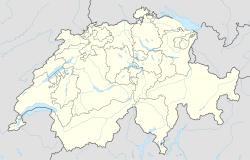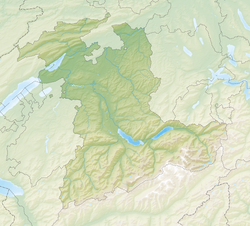Heimenhausen | |
|---|---|
| Coordinates: 47°12′36″N7°42′00″E / 47.21000°N 7.70000°E | |
| Country | Switzerland |
| Canton | Bern |
| District | Oberaargau |
| Government | |
| • Mayor | Verena Schertenleib-Helbling |
| Area | |
• Total | 5.9 km2 (2.3 sq mi) |
| Elevation | 455 m (1,493 ft) |
| Population (31 December 2018) [2] | |
• Total | 1,142 |
| • Density | 190/km2 (500/sq mi) |
| Time zone | UTC+01:00 (Central European Time) |
| • Summer (DST) | UTC+02:00 (Central European Summer Time) |
| Postal code(s) | 3373 |
| SFOS number | 0977 |
| ISO 3166 code | CH-BE |
| Surrounded by | Berken, Graben, Herzogenbuchsee, Röthenbach bei Herzogenbuchsee, Walliswil bei Wangen, Wanzwil |
| Website | www SFSO statistics |
Heimenhausen is a municipality in the Oberaargau administrative district in the canton of Bern in Switzerland.
Contents
On January 1, 2009, the municipalities of Wanzwil and Röthenbach bei Herzogenbuchsee became part of the Municipality of Heimenhausen. [3]




